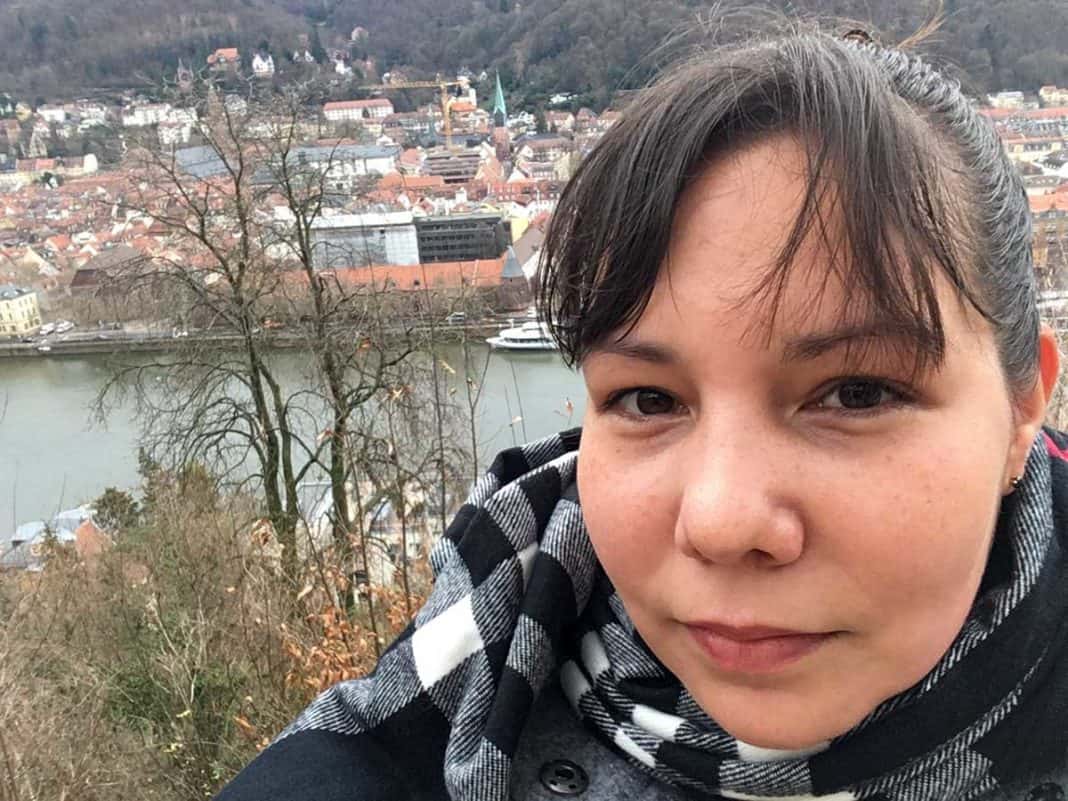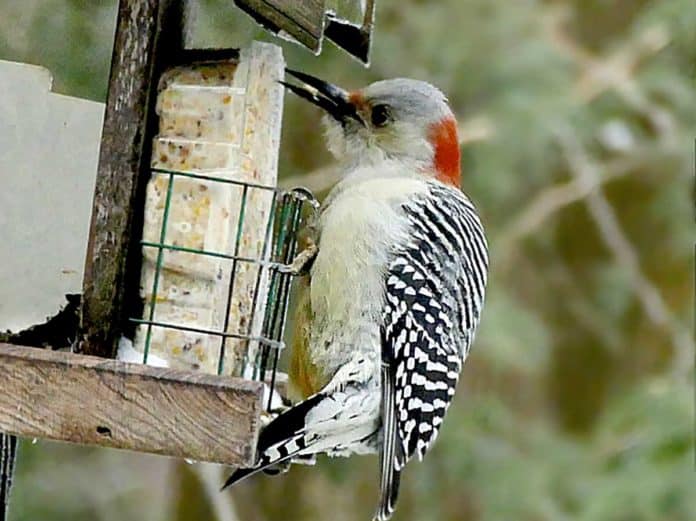TORONTO – Rachel Arsenault traces her interest in climate change and water insecurity in First Nations communities to childhood experiences in Wiikwemkoong. While Ms. Arsenault was born and raised in Toronto, her mother was born and raised in Kaboni. Ms. Arsenault spent summers and many winter holidays with her family there. She saw water insecurity every time she visited but never thought about it until she was in her twenties.
Her family didn’t have a well or a cistern so they would have water delivered to their house where it was stored in a big blue bucket outside their door. “My grandfather didn’t have water until the 1990s,” she said. “He had a cistern put in so he was relying on water trucks, and so was my aunt.”
At the time, her aunt also warned her never to swim at the Wiikwemkoong beach. She didn’t find out why until she was working on her master’s research. “One of the elders in the community told me the dump was affecting the water there. People were getting rashes on their skin back in the 1980s.” One of her professors told her the graveyard was also leaching into that beach.
“It was disturbing to think about,” she remembered. “But there were a lot of communities that didn’t have community planning in the ‘60s, ‘70s, ‘80s, and there were even a few communities that were struggling with this in the ‘90s as well. I think there are other First Nations that have just started working on this in the past several years. That’s one of the issues.”
In 2014 Ms. Arsenault began working with Indigenous youth, one from Wabauskang in Treaty 3 territory and the other from Serpent River. “They were both talking about water insecurity in their communities and I was shocked because like everyone else growing up, you think that Canada is a very water-rich country and that we wouldn’t have too many water issues here.” That got her thinking about her own upbringing and the differences between Toronto and Wiikwemkoong with regards to access to water, or a lack thereof for some places. Then in 2015 she started working with more Indigenous youth from across the province and questioned them about water insecurity in their home communities. Their responses also shocked her: not a single one of them at that time had water security within their communities.
“These youth were coming from Sandy Lake First Nation, Munsee-Delaware, Six Nations of the Grand River territory, Wabauskang, Serpent River and many other communities,” she said. “Some of them had access to water, but a lot of them were reliant on water trucks. I was thinking that a water truck should never have been a solution for access to water. I was about eight years old when I remember noticing that my family members were reliant on water trucks. I’m in my 30s now and a lot of them still have the same access to water that they had 30 years ago. That’s pretty crazy when you think about it.
“There were other communities, Sandy Lake, Six Nations and Shawanaga, and they’re all relying on water trucks as well.”
Some First Nation communities haven’t had access to water in decades, Ms. Arsenault noted, pointing to recent news concerning Neskantaga. “They had hydrocarbons in their water and they had to evacuate the whole community.” In 2016, Human Rights Watch prepared a report about water insecurity in First Nations communities throughout Canada and they found that out of 133 First Nations in Ontario, 90 water systems in this province were on boil water advisories at that time.
“Water insecurity also impacts community housing and overcrowding conditions, which during the pandemic is pretty scary because people are supposed to social distance,” said Ms. Arsenault. “What a lot of people don’t realize is when you have issues with water security you can’t build new homes or you have trouble building new homes. How do you secure funding when you don’t have access to water? It just doesn’t make a lot of sense. We’re in the middle of a pandemic and some people can’t even use their water for bathing. It’s a really big issue, especially now with the pandemic.”
When she began working on her master’s degree, she realized there were many different issues to cover. She interviewed members of Hiawatha First Nation, which is near Curve Lake. They told her that most people in their communities had well systems. They didn’t understand why the government couldn’t help them with their well systems, which can be very costly for individuals. “The community was left to assist their members with that or leave them to fend for themselves,” she said. “I was actually shocked that there are a lot of First Nation communities, like Batchawana, who also rely on well systems and they don’t get any support at all for maintenance on their water systems. I think the government only funds water systems which supply water to a minimum of five homes so that was another issue that came up.”
Ms. Arsenault has always felt a strong connection to land and water. As a child, her favourite day was Earth Day. “We used to pick up garbage in the creeks and rivers where we could do that safely and I found that I never wanted to stop when they told us it was time to go home.” As she got older that feeling only got stronger. In 2015, she attended her first water ceremony and knew then that protecting the lands and waters was her calling. At the same time, she met the late Josephine Mandamin, who was also from Wiikwemkoong. “I had so much love and appreciation for everything she did for the water,” she said. “Now we have another water warrior, Autumn Peltier.”
She realized that water is important not just to her culture, but to all Indigenous cultures. “The women are the keepers and the protectors of the water and they can’t fulfil that role without Indigenous men protecting us as we protect the water. Protecting water and respecting water is everyone’s responsibility, not just women.”
Indigenous peoples understand the importance of protecting the land and the water because both are a sacred gift that connects us to the Creator and are gifts that were given to us by the Creator, she explained. Water also connects us to our ancestors and we need to protect it for future generations as well,” said Ms. Arsenault. “Each generation coming after us deserves to have access to the quality and quantity of water that the present generations do. If we had lived like this since the beginning we wouldn’t have all the environmental issues that we have today.”
She feels that it is her responsibility as an Indigenous woman to speak up for the water, to protect the water and to attend ceremonies for water. She believes it is necessary to share the reasons why we need to do this work and also to discuss the reasons why we failed in the past and to try to help facilitate those discussions on how we can do better.
“Water security is definitely a complex issue and there are no easy solutions,” she said. “Money alone won’t solve our problem and even if it could, I don’t believe there’s enough to go around. I don’t believe Canada has enough money to solve all of our water challenges nationwide. I don’t know if billions would cover that; I have no idea how much money, resources and capacity it would take.”
In 2016 Ms. Arsenault joined the Decolonizing Water Partnership Project as part of the Indigenous Research Methods Working Group (IRMWG). One of the first projects that IRMWG worked on resulted in a paper, ‘Shifting the Framework of Canadian Water Governance through Indigenous Research Methods: Acknowledging the Past with an Eye to the Future,’ for the online journal Water. “One of the things that we wanted to do with that article was to share information about what was really happening out there and we also wanted to talk about different projects that the people on the team had worked on. For example, researcher Dr. Carrie Bourassa talked about ‘two-eyed seeing’ and her research lab.”
A Mi’kmaw elder from the east coast, Albert Marshall, came up with the idea of two-eyed seeing in 2004. This is the practice of looking at the western science—and technology-based—ways of thinking (one eye) and while using the other eye to see through an Indigenous lens. The goal is to use both eyes or ways together for the benefit of all. “It’s not just an Indigenous concept. It’s a way for multiple people with diverse backgrounds to bring their focus and priorities into what they’re doing.”
Another interesting thing the partnership did was hire an engineer who developed easy-to-assemble water monitors complete with the software and hardware to use them. They discovered that by having communities build their own water monitors, they would only pay about one-quarter of the cost they normally would for using water monitors. “This would be a big help for communities that normally used these devices. I really enjoyed being a part of the partnership project and I miss it.”
Two years ago, Ms. Arsenault spoke at the University of Heidelburg in Germany on the topic of water and climate change in Canada. She highlighted how Doug Ford fired the environmental commissioner of Ontario, Dianne Saxe, who had been working to highlight the issues of water insecurity and climate change, and also spoke about “the Ford government wasting $30 million taxpayers’ dollars to sue the federal government on the federal carbon tax. Think about how that $30 million could have gone to assist communities with their climate change challenges or their water challenges or even improving their access to clean water in general.”
Climate change is the focus of her Ph.D. studies. “One area I am very interested in focusing on is water and how it is impacted by climate change, as well as aquatic species. They’re being impacted as well. Climate change has taken a toll on our fish. They don’t adapt well to warming water.”
One noteworthy thing, Ms. Arsenault shared, came from a discussion she had with Dr. Deborah McGregor of Birch Island, whom she worked with on the Decolonizing Water project and who is currently her Ph.D. supervisor. “She reminded me that First Nations communities are tired of the focus being on all the ways First Nations communities are suffering. One of the things I really want to flush out is that some First Nations communities have interesting ideas and insights into solving some of their own issues and that’s something us researchers have to start focusing on: community based solutions.”
First Nations communities and organizations such as the Chiefs of Ontario, the Ontario First Nations Technical Services Corporation, the Assembly of First Nations and even the First Nations chiefs and councillors and technicians themselves have been saying that for years, Ms. Arsenault noted.
She feels it’s important as a researcher to share her knowledge but also to acknowledge where some of her ideas came from. “They’re not just mine,” she said. “I’ve had a lot of help along the way. Indigenous people have a lot of knowledge and it’s really important for me to share knowledge that I’ve received from other Indigenous people and keep moving it along. That’s a very important part of the process for me.”
“Indigenous peoples are going to be key in coming up with climate change solutions and water solutions. They have their own ideas and ways to implement them and I think they need to be more involved,” Ms. Arsenault concluded.





